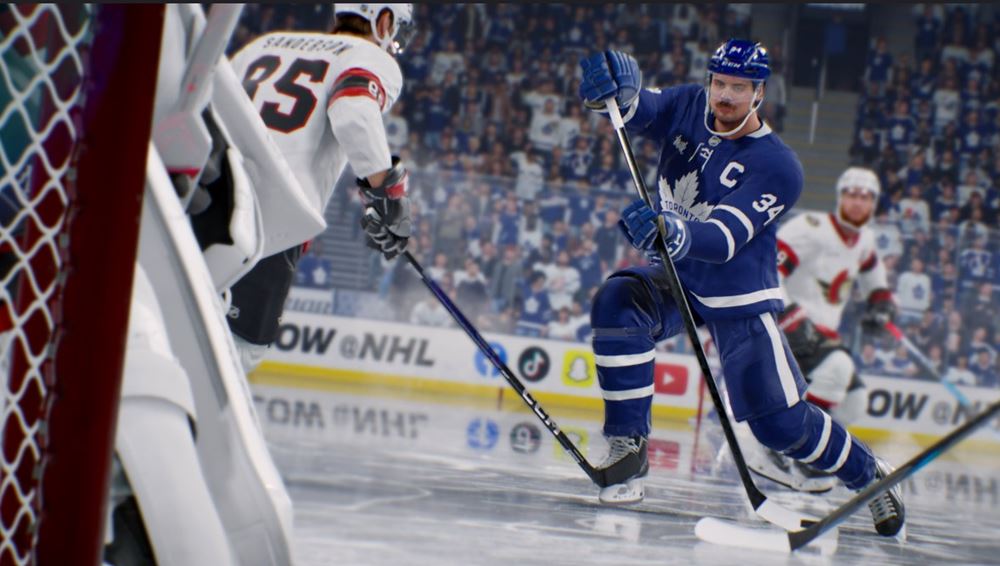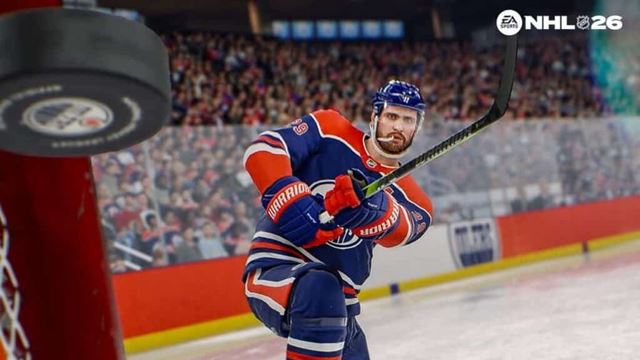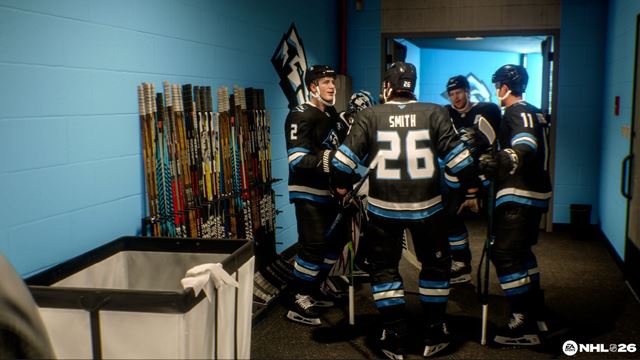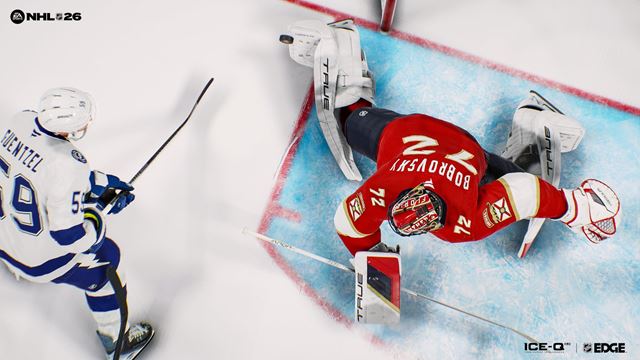|
|
From Data to Drama: How NHL 26 Brings Real Players to Life9/12/2025
We spoke with Mike Inglehart, Creative Director of NHL 26, about how this technology is transforming the way players move and play on the virtual ice, the role of community feedback in shaping the game, and how the franchise continues to grow its glo
|
Hockey has always been about passion, speed, and authenticity—and NHL 26 is aiming to capture all of that more than ever before. With the integration of NHL EDGE player and puck tracking data into the new ICE-Q 2.0 system, EA SPORTS is promising the most realistic and dynamic hockey experience in the series to date. We spoke with Mike Inglehart, Creative Director of NHL 26, about how this technology is transforming the way players move and play on the virtual ice, the role of community feedback in shaping the game, and how the franchise continues to grow its global reach.
What do you consider the most significant innovation in NHL 26 compared to last year’s installment?
There are many new and exciting updates coming to NHL 26 this year, but the largest is the integration of league-backed data in partnership with NHL EDGE. This partnership comes to life through the new ICE-Q 2.0, setting a new standard for hockey realism. Every star plays like their real-life counterpart fueled by the National Hockey League’s positional data (NHL EDGE Puck and Player Tracking).
Player attributes such as skating acceleration, top speed, slap shot power, and wrist shot power are powered by NHL EDGE data in ICE-Q 2.0, providing authentic differentiation among players while offering strategic advantages and diversifying the gameplay experience. ICE-Q 2.0 integrates real player data to capture unique tendencies and signature moves, while the refined approach to X-Factors adds depth and realism, making the gameplay experience more dynamic and truer to each player.
NHL 26 is being developed using the new NHL EDGE technology. What opportunities does this bring to the game’s development?
NHL EDGE is a game-changer for authenticity. By integrating real-world player and puck tracking data, we can make every player feel unique on the ice. Players will see and feel the difference when controlling their favorite athletes, making every matchup more intense and unpredictable.
When you play NHL 26, you’ll notice that star players move, act, and react closer to what they do in real life. That creates more meaningful decisions, more dramatic moments, and more opportunities for players to express themselves on the ice. It also adds depth for strategy, as every team and player brings different strengths and styles to each game.
While working with the EDGE technology, did you discover anything unexpected or particularly surprising?
Integrating NHL EDGE was a multi-year, cross-discipline effort. On the technical side, we had to build a new system that could ingest enormous volumes of league data, filter and tune it, and translate it into meaningful gameplay variables—without compromising the fun on ice gameplay.
Creatively, our biggest challenge was ensuring that the new player differentiation and realism added to players’ experience, making the game more fun and intuitive. It required constant collaboration between our design, engineering, and art teams.
How did you approach enhancing the hockey simulation this year—have there been improvements in physics, AI, or animations?
We wanted NHL 26 to look and feel more authentic and realistic than ever. Our new presentation package introduces expanded goal and save replays, deeper stat overlays, and multi-story highlight packages that showcase hat tricks, save compilations, and more. Dynamic cinematic lighting and enhanced cutscenes—like tunnel walkouts and Stanley Cup celebrations—helped us bring NHL emotion and fandom to life.
We also layered in more advanced AR graphics, so every faceoff and key moment provides richer context and insight, making every game feel like a broadcast event.
How have you incorporated community feedback from NHL 25 into NHL 26?
Player feedback is paramount to crafting the NHL series. We use a range of methods to collect it, such as dedicated user research groups within EA SPORTS to identify the most requested features and test new ones early in development, collecting feedback and informing our product tuning. Our community team also connects daily with players across forums and social channels, giving us valuable, real-time insight. We truly try to leave no stone unturned when it comes to player feedback, and we believe the innovations and improvements we have made on NHL 26 reflect this.
The last time the NHL series appeared on PC was with NHL 09. How do you view the PC platform today, and is there any chance the series might return to PC in the future?
We know there’s a passionate community of hockey fans on PC who would love to see the NHL series return to the platform. Right now, we’re focusing on delivering the most authentic and advanced experience possible to Gen 5. PS5 and Xbox Series X |S.
In what ways does the NHL series differ from FIFA/EA Sports FC or Madden in terms of development philosophy?
It's difficult to speak to specifics as we are constantly focused on the NHL, but we are always looking at ways to improve game quality throughout development. We touched earlier on how much we interact with players and get feedback on features throughout the various points of development, and that is something we really put a ton of value on. We also spend a lot of cycles on simply playing the product, assessing where features are against both the vision and feature expectations and much like a chef tasting dishes before serving them, you can never play your game enough to ensure a high-quality experience. We also try to take measured creative risks against our community feedback, but we ensure we are still being representative of the authenticity that is needed to represent the NHL.
When creating new features, do you take inspiration from trends in other EA Sports titles?
We’re always learning from and augmenting across the portfolio. Their successes inspire us to evolve the franchise as a year-round live service that’s rewarding and fresh. For example, in HUT 26, we’ve introduced HUT Seasons, a new way to compete both online and offline with structured ranked play, the HUT Cup Chase, and the introduction of Heroes & Icons, which is our way of letting players celebrate legends of the game and create their own legacy.
We also collaborate on innovations like streamlined menus, new team-building mechanics, and a more dynamic reward system, all while listening closely to what our hockey community wants and bringing them closer to the sport they love.
How do you perceive the popularity of the NHL series in different regions, such as Europe compared to North America?
While hockey is most popular in North America, we’ve seen strong and growing engagement from European markets—especially in countries with deep hockey traditions like Sweden, Finland, Czechia, Slovakia, Germany, and Switzerland. We pay close attention to player trends and preferences in these regions, and we’re always looking for ways to reflect their unique styles and stars in the game. We are happy to see that our international player base is passionate and very engaged.
I have chased my beloved Buffalo Sabres to a few NHL Global Series events in Sweden in 2019 and last year in Czechia and always make it a point to take in the leagues native to the country to get a taste of how the passion for hockey translates. Those experiences filter back into some of the development thinking. Whether it's the top-flight league or a lower division in my travels abroad, the passion for hockey is a universal emotion.
Hockey is becoming a more global sport, with countries like Germany and Latvia earning medals in recent international tournaments. Are you making efforts to attract this growing international audience, including fans in regions that may not have traditionally played hockey games?
One really amazing thing about the NHL is how international it is, and with players like Leon Draisaitl being a prominent player from Germany in the league, the core NHL experience helps with that wider awareness. Our product also features many European leagues, which really expands how players from different countries can connect with the game. We currently offer a wide range of international leagues from different locations, and while we have not expanded on that this year, it is an opportunity for the NHL franchise.
The NHL Draft has increasingly become a major spectacle, with first-round picks receiving significant attention. Have you noticed this trend reflected in the game—for example, in HUT data or player preferences, where users may be more eager to acquire first-round draft picks?
One thing is for certain, and that is our players have a huge amount of passion around getting the top picks into the game as soon as we can. We have also paid tribute to previous top picks in year-end HUT events as we ramp up for the new product release. Once the rosters settle and the drafted player either sticks in the NHL or goes down, players can expect roster updates to match the real-world player lineups on each team.
How do you maintain long-term community engagement throughout the year?
Maintaining long-term community engagement is a priority for us. With NHL 26, we’ve introduced new ways for players to stay connected to the sport all season long, including dynamic live service events, regular content drops, and new competitive modes that keep the gameplay experience feeling fresh and relevant. We enhanced in-game presentation and visuals to make every match feel like a true NHL broadcast, further immersing players in the excitement of the season. Our goal is to always have something exciting happening in NHL 26, so players feel engaged, rewarded and closer to the sport they love.
And finally, as Slovaks, we have to ask—what can we expect from Juraj Slafkovský in NHL 26 in terms of stats? And do you think this could finally be his true breakout season?
We have Juraj sitting at a formidable 85 overall rating, and with the new X-FACTOR system, he will hit the ice in NHL 26 with a tier 2 UNSTOPPABLE X-FACTOR, which will allow him to throw stronger reverse hits and battle through push checks with more strength. He also has a tier 1 QUICK RELEASE X-FACTOR, which means he can get the puck off his stick quicker than others, impacting the goalie’s ability to be set and ready for his shot. So much like in real life, a solid physical player who has more than enough shot to rack up some goals.




